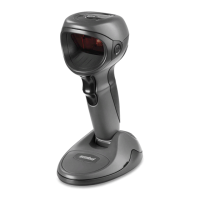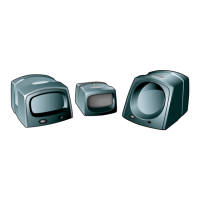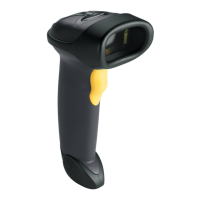xviii Symbol DS6707 Digital Imager Scanner Product Reference Guide
•
Chapter 4, User Preferences & Miscellaneous Digital Imager Scanner Options provides frequently used
features to customize how data transmits to the host, and programming bar codes for selecting these
features for the digital imager scanner.
•
Chapter 5, SSI Interface describes how to set up the digital imager scanner with a Simple Serial Interface
(SSI) host. When using SSI, program the digital imager scanner via bar code menu or SSI host commands.
•
Chapter 6, Imaging Preferences provides programming bar codes for selecting imaging features.
•
Chapter 7, USB Interface describes how to set up the digital imager scanner with a USB host.
•
Chapter 8, RS-232 Interface describes how to set up the digital imager scanner with an RS-232 host, such as
point-of-sale devices, host computers, or other devices with an available RS-232 port.
•
Chapter 9, 123Scan2 describes the 123Scan
2
PC-based scanner configuration tool, and provides the bar
code to scan to communicate with the 123Scan
2
program.
•
Chapter 10, Symbologies describes all symbology features and provides programming bar codes for
selecting these features for the digital imager scanner.
•
Chapter 11, Advanced Data Formatting (ADF) describes how to customize scanned data before transmitting
to the host.
•
Appendix A, Standard Default Parameters provides a table of all host devices and miscellaneous scanner
defaults.
•
Appendix B, Programming Reference provides a table of AIM code identifiers, ASCII character conversions,
and keyboard maps.
•
Appendix C, Sample Bar Codes includes sample bar codes of various code types.
•
Appendix D, Numeric Bar Codes includes the numeric bar codes to scan for parameters requiring specific
numeric values.
•
Appendix E, ASCII Character Sets provides ASCII character value tables.
Notational Conventions
The following conventions are used in this document:
•
Italics are used to highlight the following:
• Chapters and sections in this and related documents
• Dialog box, window and screen names
• Drop-down list and list box names
• Check box and radio button names
•
Bold text is used to highlight the following:
• Key names on a keypad
• Button names on a screen.
•
bullets (•) indicate:
• Action items
• Lists of alternatives
• Lists of required steps that are not necessarily sequential
•
Sequential lists (e.g., those that describe step-by-step procedures) appear as numbered lists.

